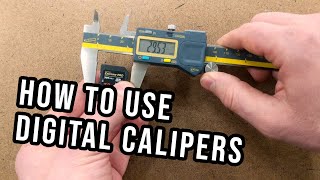
How to Use Digital Calipers to Measure Objects
 Digital calipers are amazing tools for measuring objects in the real world. They can measure depth, outside dimensions, interior dimensions and step dimensions. They are an indispensable tool for 3D modeling, design, engineering, Machining and any other related field.
Digital calipers are amazing tools for measuring objects in the real world. They can measure depth, outside dimensions, interior dimensions and step dimensions. They are an indispensable tool for 3D modeling, design, engineering, Machining and any other related field.
0:00 Introduction
0:18 Calibration
0:36 Caliper Measurement Tools
1:02 Measure Outside Dimensions
1:28 Measure Interior Dimensions
1:46 Measure Depth
2:01 Step Measurements
2:41 Comparative Measurements
Intro to Technical Sketching For Artists and Designers
1. Technical Drawing Tools for Design – https://youtu.be/QaTlzXEHu4g
2. How to Draw Straight Lines – https://youtu.be/UUQa2CtzIwE
3. Isometric Cube Freehand – https://youtu.be/8FkcqdCmT1U
4. Isometric Circle Freehand – https://youtu.be/twj5luXIC_c
5. Isometric Cube with T-Square – https://youtu.be/7t4ycR3fXJ4
6. Isometric Circle with Compass – https://youtu.be/EaTwlLaMYao
7. How to Use Digital Calipers – https://youtu.be/oOZjbbe6YZk
8. Third Angle Projection Freehand – https://youtu.be/0SdWqEYKYrI
9. Third Angle Projection Hole in Object Freehand – https://youtu.be/QTMfdxI5QYk
10. Third Angle Projection with T-Square – https://youtu.be/jfrTuoI6hBQ
11. Third Angle Projection USB Plug – https://youtu.be/2xS3AzFV7gs
Be the first to comment